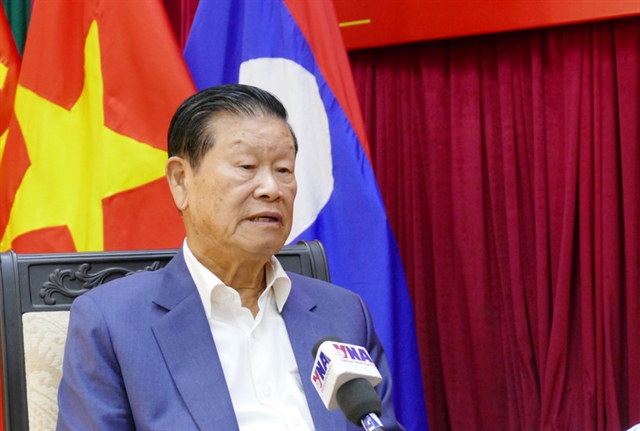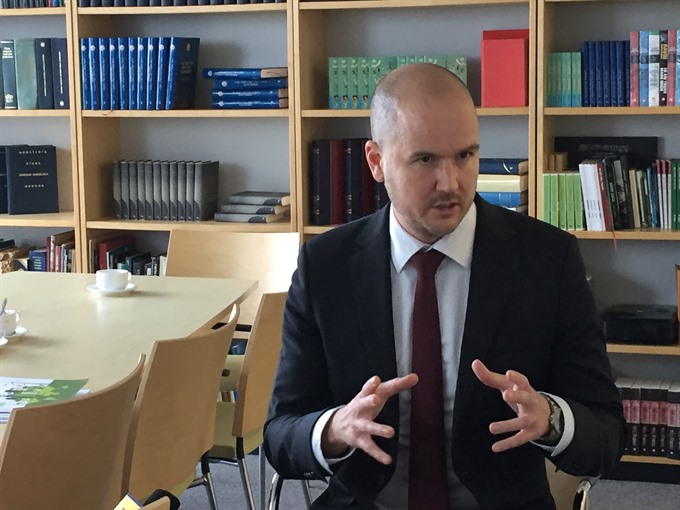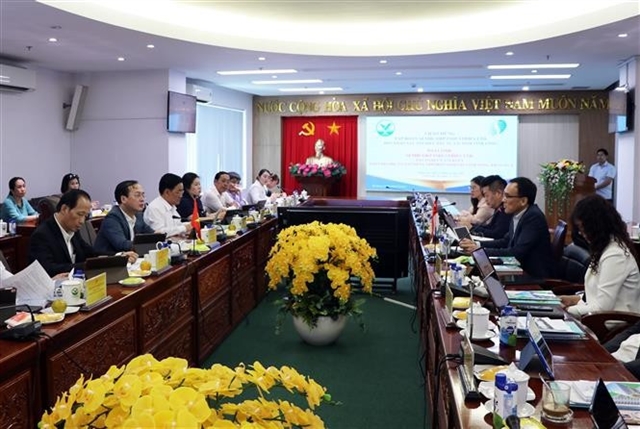 Opinion
Opinion

Investing in renewable energy is an emerging trend in Việt
 |
| Associate Professor Gustav Martinsson talks with Việt Nam’s press. - VNS Photo Khoa Thư |
Investing in renewable energy is an emerging trend in Việt
What do you think is the most important issue when talking about the transition from fossil fuel to renewable energy?
I think the most important thing is a structural problem: we don’t put a price on carbon. There is a need for political action, meaning decision makers must do what they can to fix this problem so that companies cannot make profit from industries that release a lot of carbon to the atmosphere.
The biggest challenge to me is securing political will from decision makers. Companies and organisations are not going to want this change. What is good for the climate in the long run might be against their short term interests and profits. Therefore, you should be prepared for that.
The Government can issue some regulations or taxes but then you will need to have formal mechanisms to accelerate that change and try to make it through dialogue.
In transitioning into renewable energy, there are two parts to the job. The first is to encourage investment in renewables and the second is creating a mechanism to punish or discourage dirty fuels. What is your comment on that?
I agree that we should encourage investment in renewable energy.
However, I would not say that you should do one first and then the other. There is actually new interesting research coming out on exactly how to do the combination. I think the standard now is to think about the goal. Because the market for renewable energy is now small, you will need subsidies to make it more profitable for investors to invest there, before turning to hardline measures with taxes and punishment.
You can first start with subsidising renewable energy and not punishing the use of carbon. The combination can be a little bit different depending on what the country sets up.
At the moment, coal-fire plants still supply a large part of Việt
Coal is the number one enemy to the environment. And I think we should keep in mind that it is not that cheap. It has to be subsidised currently. Therefore, cutting off subsidies will make coal less competitive. On the other hand, we need something to replace coal. Globally, renewable energy is becoming cheaper and more competitive compared to coal. It is an opportunity for us to enact the combination, both growing renewables and reducing greenhouse emissions.
What advantages does Việt
In terms of green energy,
Therefore, I think one of the biggest advantages that countries like Việt
Energy policies are needed but I think you should build a policy framework in which renewable energy versus coal, for example, is put into consideration.
Because the incentive system is crucial. If you can make profit from coal, you will keep doing it unless profit is higher for renewable energy.
How should the Government perform its monitoring role in the green transition?
I think the government embraces the power of making decisions. We should be very careful in making policy.
Taxing is not for forbidding, but also about creating force for transition. We could forbid the use of carbon directly but we need energy to sustain and develop the economy.
Also, there are a lot of lobbying and interest groups that do not want the transitions to happen. The problem is not unique to Việt
The decision came from the government as the private sectors did not want it, at all. But they have to adapt to the regulations and find new solutions to make money.
To ensure a just transition to green energy, companies have to be transparent about their impacts on the environment. How can Việt
It is relatively new and in




